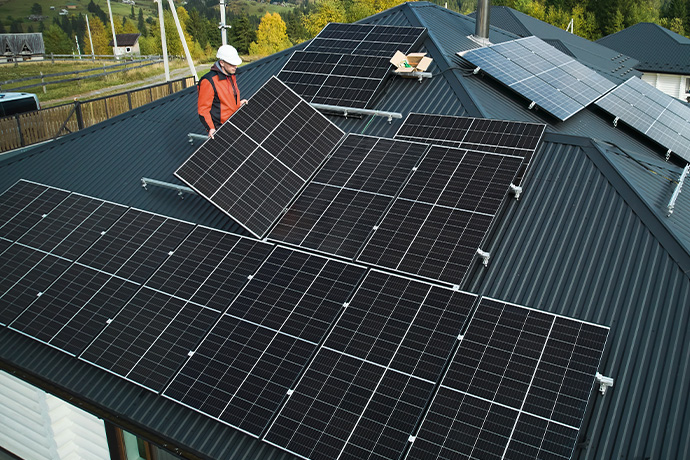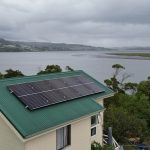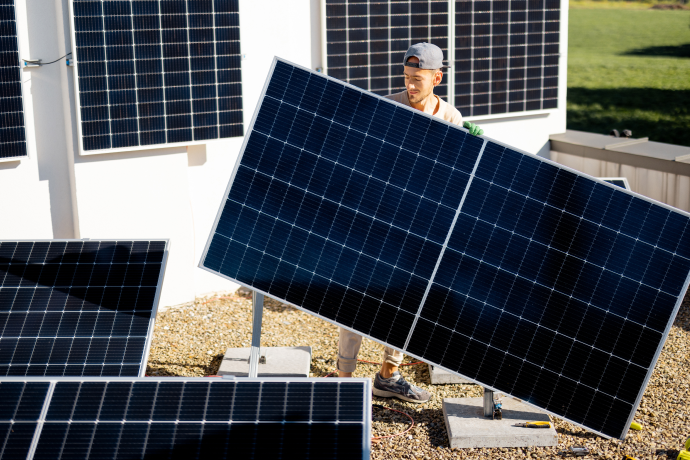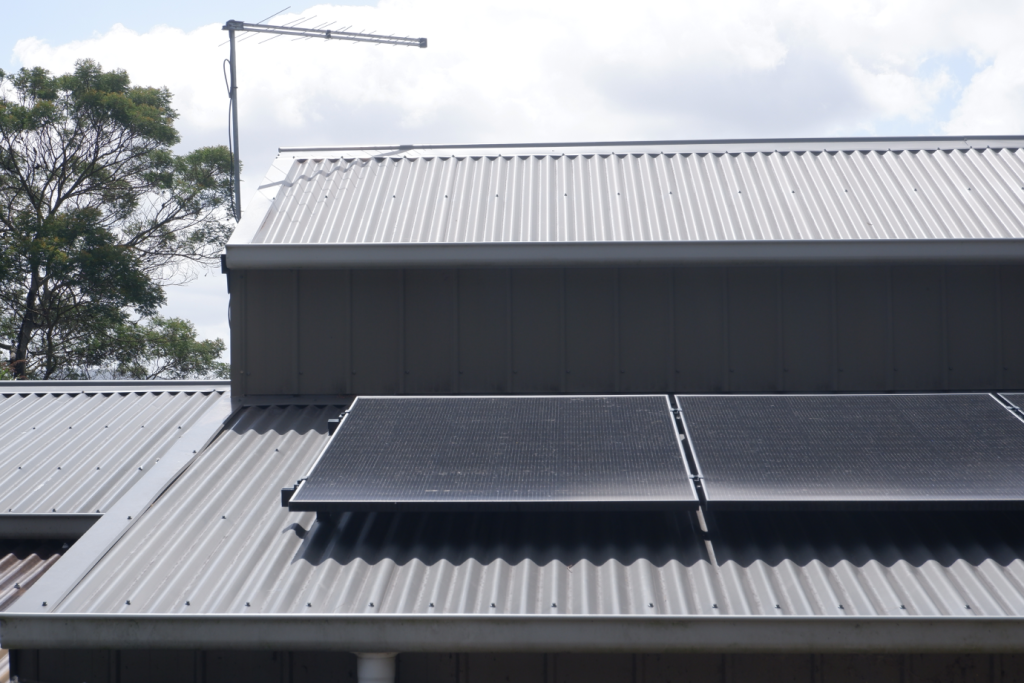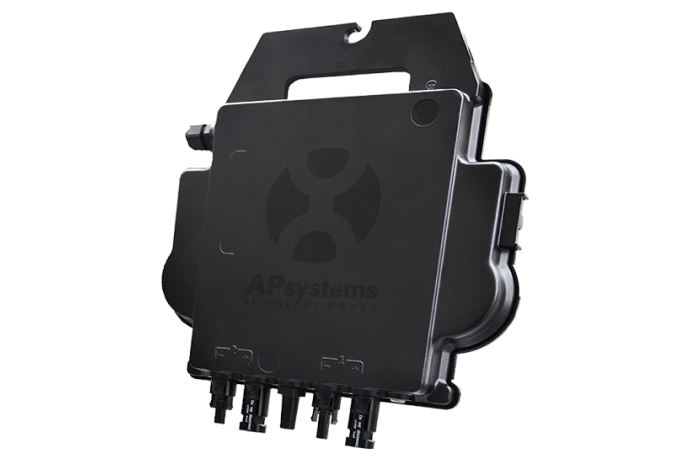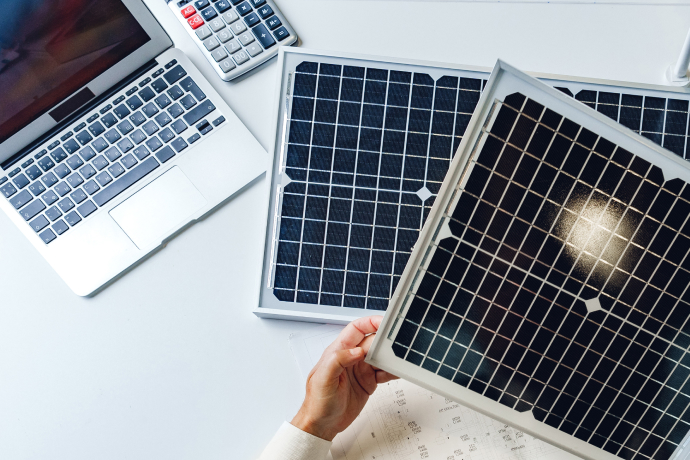
Tasmania has a commitment to renewable energy, and is embracing solar power. For those considering solar panels, one of the main considerations will be the cost. The cost of installing solar panels can vary widely, with several key factors determining the overall expense. The average 6.6kW system costs around $6,000 to $10,000. In this article we break down everything you need to know about the cost of solar panels, including rebates and solar feed-in tariffs to help you find the most suitable solar panels for you.
Benefits of Solar Panels
If you are considering switching to solar panels, there are many benefits, both financial and environmental. Amongst other things it is kinder to the planet, and low maintenance. Here are the main benefits of solar panels.
- Saves you money & reduces power bills. A solar system that is installed properly will save you money. The amount you save will depend on the size of your solar system, location and lifestyle. A household with a small solar system and a low energy bill may save a few hundred dollars per year, while a large solar system can save thousands. Learning how much you can save requires an understanding of your electricity usage as well as how your potential solar system can work to specifically benefit your house and its location. A solar calculator will provide an accurate insight into your potential savings.
- Increase home value. A solar system installed in a home has a higher estimated value than one without according to research. Just like having a swimming pool or renovated kitchen, potential buyers are willing to pay more for a home with an existing solar system. Studies have shown that a solar system can provide up to a 6 percent increase in home value and that solar homes will sell up to 20 percent faster than those without.
- Energy independence. Solar power means a home can function independently and not rely on fluctuating energy policies and prices that determine electricity expenses. Solar power that covers your electricity demands puts the power back in your hands. Those with a battery connected to their system can operate off-grid with access to power any time of the day or night.
- Saves the environment. Solar panels produce no greenhouse gases or air pollution. This is because the electricity is made from pure sunlight without burning any fossil fuels like coal, oil or gas. The reason they are called fossil fuels is that they take billions of years to form naturally and, as a result, they cannot be replenished quickly. Fossil fuels have a negative impact on the environment. When they are burned, they release carbon dioxide, which is a greenhouse gas, into the air. The greenhouse gas then traps the heat in the atmosphere and causes global warming. Renewable energy, like solar power, is naturally produced by the sun. There are no gas emissions, and it will never run out.
- Government subsidies. The Government can subsidise the purchase of your solar system. There are also special subsidies for pensioners and low income households to make it more affordable. A 14 panel system, you could save up to $2,242 with the eligible government solar rebates. Other incentives like feed-in tariffs pay you to return unused electricity to the grid for others to use.
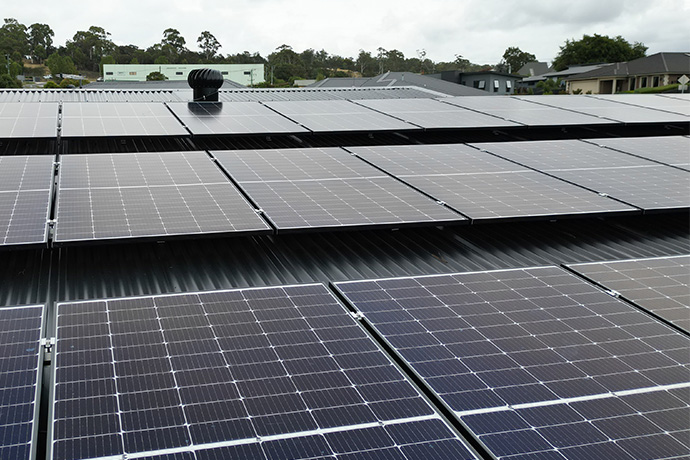
How Much Do Solar Panels in Tasmania Cost?
The average price of solar panels in Tasmania is between $6,000 and $13,500 for residential solar panels up to 10kW. Below is a list of estimated costs for fully installed systems in Tasmania. Higher-end prices reflect premium installations using top-quality gear, while lower-end prices are for budget-friendly options. Mid-range prices are for quality systems installed by experienced professionals. This list is compiled by TSS after researching trusted and reputable brands.
Estimated costs for fully installed systems:
3kW: $4,000 – $5,500
4kW: $4,500 – $6,500
5kW: $5,000 – $8,500
5.4kW: $5,200 – $9,000
6kW: $5,500 – $9,500
6.6kW: $6,000 – $10,000
7kW: $7,000 – $10,500
8kW: $8,000 – $11,500
10kW: $8,500 – $13,500
15kW: $13,500 – $18,500
20kW: $17,500 – $22,500
*Note that these prices include the solar rebate. Additional costs may apply for electrical upgrades or complex installations. Opting for micro inverters or battery storage will increase costs accordingly.
If quoted significantly below these ranges, the seller’s margins may be slim or compromised. Conversely, significantly higher quotes may indicate dishonest practices. At TSS, you can expect the system that is tailored and designed by our professionals should reflect within these ranges.
Tasmania Solar Rebates and Incentives
There are two ways to save money with solar panels. These are STCs and feed in tariffs.
STCs
The solar rebate is an amount of money you get refunded for having solar panels installed. As a reward for installing solar panels with renewable energy certificates, your solar installer can use the solar rebate to discount installation and system costs. Basically, it makes solar panels cheaper to buy and install. Each STC has a value, with one STC given for every 1MWh your system produces. The amount of STCs created depends on the state and the size of the unit installed. Basically, the more STCs, the higher the rebate.
Feed-in Tariffs
Solar feed-in tariffs are a way to get paid for the excess solar electricity a home or business generates. In Tasmania, the state sets the feed-in tariff and it changes occasionally. At the moment the feed-in tariff is 10.869 cents per kWh. To be eligible for a feed-in tariff in Tasmania, you must own an eligible solar panel system connected to the grid, and be registered for the FIT program with a registered authority.
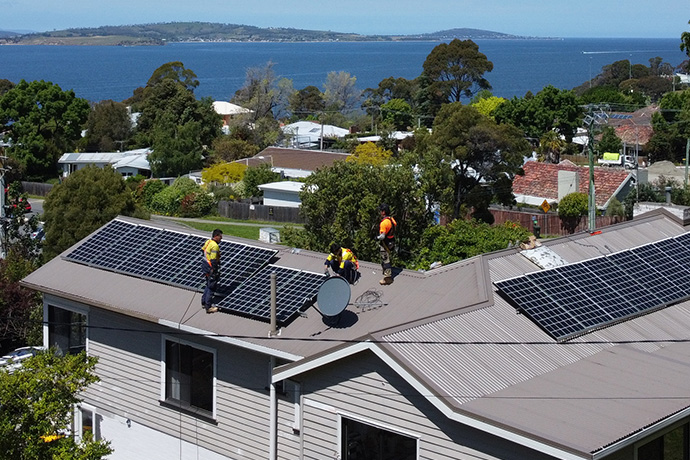
Is it Worth Having Solar Panels in Tasmania?
Solar is an investment and a way of saving money. An average solar system can save Australians at least 40% to 80% off their electricity bill, which equates to around $1,440 to 2,880 a year if your bills are $900 per quarter. The long-term savings from a solar system, particularly those coupled with batteries, provides an environmentally and financially suitable alternative to a country-wide financial burden.
Additionally, you can save more money by using your solar wisely. Programming your appliances and altering consumption habits to use electricity during peak solar generation periods can boost savings. By using appliances during the day you can avoid the need to buy energy from your retailer at night.
Choosing the Right Sized Solar System
One of the factors affecting the cost of the solar system is the size of the system. So it is important to choose the right sized system for your needs. Choosing the right sized solar system will maximise your energy savings in upfront cost, installation, and rebates. If your system is too small, it will not produce enough energy for your household needs, increasing reliance on the grid and higher electricity bills.
Advancements in the past decade have led to greater solar cell efficiency, the use of new materials, improved manufacturing techniques, and more flexible designs. These improvements mean that greater efficiency can be achieved with smaller system sizes. One of the most significant advances in solar technology has been the development of high-efficiency solar panels. This breakthrough is particularly important for Tasmania, which typically receives less sunlight compared to the rest of Australia.
In terms of outlay, a larger solar system will cost up to $22,500, while a small system will set you back $4,500. However larger solar systems will provide a higher rebate. The more renewable energy your system produces, the higher the financial return.
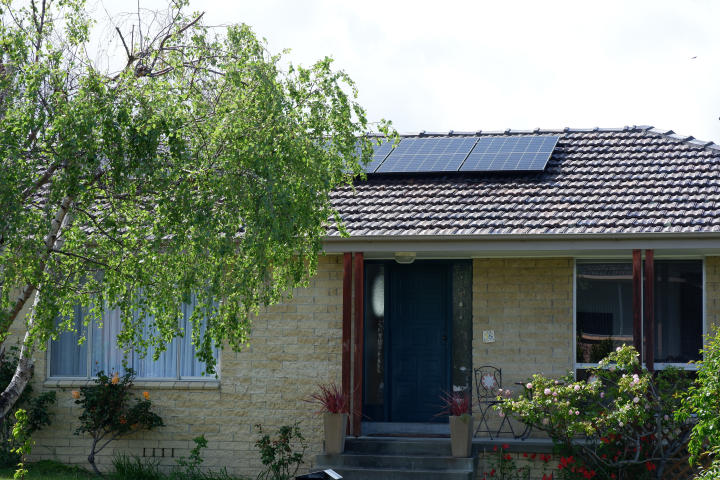
Payment Options
While solar systems can offer substantial long term savings, the upfront costs might be a bit of a deterrent. Fortunately, there are a number of payment options available to help finance your new solar system installation. For those with savings, you may decide to pay outright, and start reaping the benefits. Alternatively, a regular bank loan or credit card will suffice, but these may include higher interest fees. If none of these appeals, here are alternative payment options.
Green Loans. A green loan is a type of personal loan, but it’s specifically to fund the purchase and installation of approved clean energy products like solar panels. Because green loans are helping to provide a more sustainable future, green loans are often offered at a lower interest rate. Green loans are available from a range of financial institutions.
Tasmania Energy Saver Loan*. To help support more Tasmanians to make the transition to solar, the Government has established the Energy Saver Loan Scheme*. The scheme provides residential and small business customers with interest free loans of up to $10,000 to spend on a range of approved energy efficiency products.
TSS Financial Payment Plans. Financing your solar system is not only easy but provides an affordable and flexible payment solution and government partnerships access. TSS financing options take into account government rebates and offer interest-free, fortnightly payments ranging from 6 to 60-month repayment periods. The approval process is simple, and pre-approval is often granted within minutes.
Solar panel cost depends on a number of factors that will determine the overall expense. Solar power is being embraced by Tasmanians who pride themselves on renewable living. However, often cost can be a concern. We have broken down all the costing of solar panels, including upfront prices, and explained incentives to help you save with Government rebates and interest-free loans. For any further details, contact your local experts at TSS.
*This article refers to the Energy Saver Loan Scheme, which closed to new applications in September 2025

